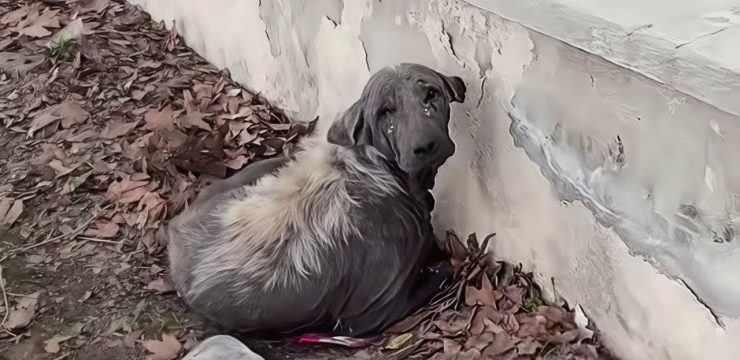It’s a sound that no one ever tells you about, yet once you hear it, it leaves a mark you’ll never forget. Known as the “death rattle,” this eerie, wet, rattling noise signals that a person is nearing the very end of life—usually within the next 23 hours. While it may sound alarming, it’s actually a natural and expected part of the dying process. For those who have sat beside a loved one in their final moments, the sound can be deeply unsettling—often mistaken for choking or gasping. But according to hospice nurse Julie McFadden, this sound is not a sign of distress. Rather, it is the body’s way of gently signaling that the journey is coming to an end.

McFadden, a Los Angeles-based palliative care nurse who shares end-of-life education on social media, explains that the death rattle is not something to fear. “The death rattle, it is the most normal thing and to be expected at the end of life. However, if you’re not used to hearing it, it can feel like the scariest thing you’ve ever heard,” she shared in a Facebook video. Many people who’ve reached out to her describe being traumatized by the sound. But McFadden believes that with better education and awareness, much of the fear surrounding it could be lessened. She’s even written a book called Nothing to Fear: Demystifying Death to Live More Fully to help people understand this often-misunderstood phase of life.
So, what exactly is the death rattle? According to Healthline, it’s a crackling, wet sound that occurs when someone is close to death and no longer strong enough to clear secretions from their throat. It happens as the swallowing reflex weakens or disappears, allowing saliva and mucus to accumulate. As air passes over these fluids with each breath, a distinctive rattling sound occurs. While it may sound like the person is in pain or choking, that’s not the case. McFadden assures that this is not causing discomfort or suffering. In fact, the individual is often unconscious or in a deep, unresponsive sleep at this stage.
From a physiological standpoint, the death rattle is as natural as the slowing of the heartbeat or the cooling of the skin. But for family members who are witnessing it, the experience can be emotionally overwhelming. Dr. Paulien Moyaert, who has also spoken extensively on the topic, stresses that treatment is not usually for the person who is dying but for the emotional well-being of those present. In a widely-viewed YouTube clip, Moyaert explains that medications may be used to reduce the sound if it becomes too distressing for the family. However, she notes, “We often give drugs to try to dry up the airways and soften the death rattle. But when we do it, it’s not for the dying person but for their family.”
Suctioning, which might seem like a logical solution to remove fluid, is generally not recommended. McFadden warns that it can be counterproductive. “We don’t usually suction it…because the suctioning will create more saliva. It feels so scary when you hear it for the first time,” she says. Instead, hospice professionals often focus on providing comfort, education, and emotional support during this time.
One of the most sobering facts about the death rattle is that it’s a strong indicator of how little time remains. “A person usually lives for 23 hours after the death rattle begins,” Moyaert notes. Although that time frame may vary slightly, the presence of this sound is a signal that death is imminent. Healthline recommends that loved ones use this time to offer words of love and comfort. “Hold your loved one’s hand,” the site advises. “Just being there can be important to a person at the end of their life.”
By bringing more awareness to the dying process, nurses and doctors like McFadden and Moyaert are helping to remove the stigma and fear that often surrounds death. Their openness invites honest conversations and provides clarity and peace to those facing the loss of someone they love. People across the internet have shared how helpful this information has been for them in moments of sorrow. One user commented under Moyaert’s video, “This was invaluable information as my mother passed away this morning. She started making this noise yesterday, and it was so distressing to hear. I’m thankful to know she was not in pain.” Another person wrote on McFadden’s social media, “I always thought my mum was choking when she died. I finally now believe she was not in pain. Thank you.” Others echoed similar sentiments, wishing they had been better informed during their loved one’s final hours.
One user shared, “That’s the death rattle? I just sat there all afternoon with my dad, so he didn’t choke. I wish the ICU explained more to me.” Another added, “It may not be painful for them but it was truly terrifying for me to hear.” These deeply personal reactions underline just how powerful—and misunderstood—the death rattle can be. But with the right information, that fear can be transformed into understanding.
McFadden encourages people to think of the death rattle as a “biological lullaby” rather than a warning siren. “It’s a sign we are close. The body is doing what it’s supposed to do,” she says. While the sound itself may be unsettling, recognizing it for what it truly is can bring comfort. It’s nature’s final reassurance that everything is unfolding as it should. What might sound like a haunting noise can actually be a sacred, gentle exhale—the last note in the beautiful song of a life well-lived.
Understanding this part of the process can help families replace fear with peace. Instead of seeing the death rattle as something to dread, we can view it as a poignant and natural part of life’s final chapter. It serves as a reminder that death, though heartbreaking, can also be a moment of grace and dignity. If you’ve ever heard the death rattle, or if you’ve been present during someone’s final hours, your experience matters. Please share your story. And consider sharing this one too—because the more we understand, the less there is to fear.





